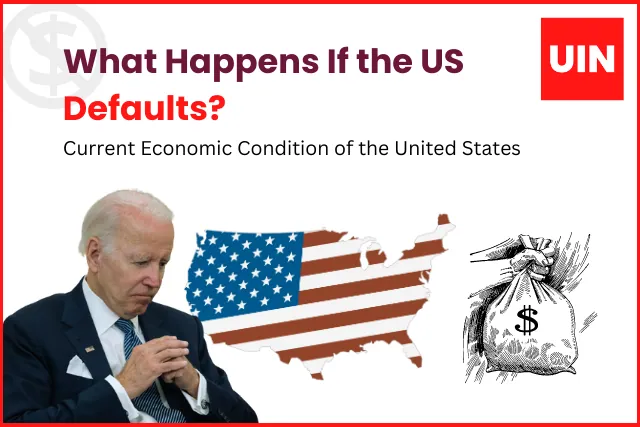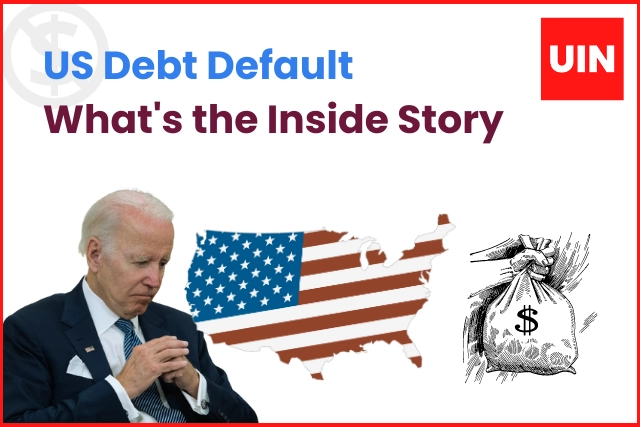Introduction
The economic condition of the United States is a topic of great importance, both domestically and globally. With the nation’s mounting debt and ongoing discussions surrounding the possibility of a US default, understanding the potential consequences is crucial. In this article, we will delve into the current economic condition of the United States, analyze the implications of a potential debt default, and explore what could happen if the US were to default on its obligations.
The United States’ Debt Situation
As of the knowledge cutoff in September 2021, the United States had accumulated a national debt exceeding $28 trillion. The debt has steadily increased over the years due to factors such as budget deficits, government spending, and borrowing. It is important to note that while the US debt is substantial, the nation has not defaulted on its debt obligations to date.
The Risk of a US Debt Default
A US debt default refers to the failure of the US government to meet its financial obligations, particularly the payment of interest and principal on Treasury bonds. Although the likelihood of a default is a subject of ongoing debate, it is crucial to understand the potential consequences if such an event were to occur.
Consequences of a US Debt Default
- Financial Market Turmoil: A US debt default would trigger significant turmoil in financial markets. Investors would lose confidence in US Treasury bonds, leading to a decline in their value. This would result in increased borrowing costs for the government and could lead to broader instability in global financial markets.
- Negative Impact on the US Dollar: The US dollar serves as the world’s primary reserve currency, and a default would erode confidence in its stability. This could potentially lead to a decline in the US dollar’s value, making imports more expensive and potentially fueling inflation.
- Rising Borrowing Costs: Following a default, borrowing costs for the United States would likely increase. Lenders would demand higher interest rates to compensate for the heightened risk associated with lending to a nation that has defaulted. This would place a significant burden on the government’s ability to finance its operations and potentially lead to austerity measures.
- Economic Recession: A default could have far-reaching consequences for the US economy, potentially leading to a recession. Higher borrowing costs would limit the government’s ability to spend, resulting in potential cuts to public services and programs. Reduced consumer and business confidence could also dampen economic growth.
- Global Economic Impact: The global economy would not be immune to the effects of a US debt default. The interconnectedness of international financial markets means that disruptions in the US economy would reverberate worldwide. Trade and investment flows could be disrupted, leading to a slowdown in global economic growth.
Preventing a US Debt Default
To prevent a debt default, the US government has several options available:
a. Raising the Debt Ceiling: The government can raise the debt ceiling, allowing it to continue borrowing to meet its financial obligations. This temporary measure buys time for the government to address underlying fiscal issues.
b. Fiscal Reforms: Implementing fiscal reforms, such as reducing the budget deficit and promoting economic growth, can help alleviate the burden of debt. This includes measures such as controlling government spending, increasing tax revenues, and addressing entitlement programs.
c. Negotiating Debt Restructuring: In dire situations, the government could explore options for debt restructuring, negotiating with creditors to alleviate the debt burden. This approach aims to make the debt more manageable and sustainable in the long term.
Conclusion
The current economic condition of the United States is a topic of concern, with the possibility of a debt default looming. While the US has not defaulted on its debt to date, the risks associated with a default are significant and could have far-reaching implications. It is essential for the government to address the mounting debt through prudent fiscal policies, sustainable economic growth, and responsible management to prevent the risk of default. By ensuring fiscal stability, the United States can maintain its financial credibility, foster economic prosperity, and contribute to global financial stability.


Zaproxy dolore alias impedit expedita quisquam.